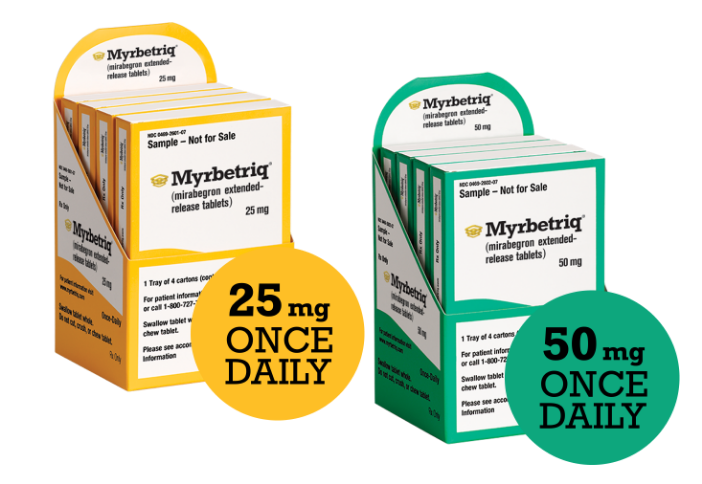
Downloadable Resources
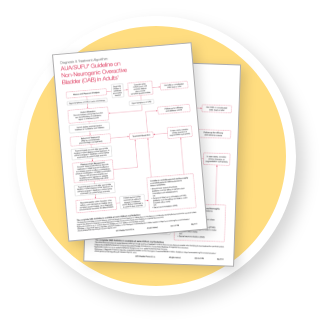
OAB Treatment Guidelines
A simple, step-wise algorithm for treating OAB patients in accordance
with AUA/SUFU Guideline. This algorithm has been updated to
include combination treatment as an option for appropriate OAB
patients.
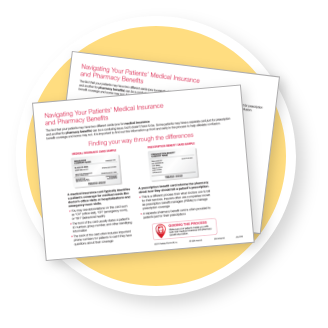
Office Staff Flashcard
Handout that defines the difference between medical insurance and
pharmacy benefits, and emphasizes the importance of collecting patient
prescription benefit information.
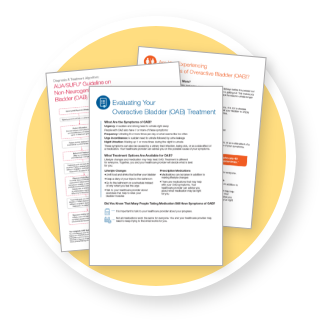
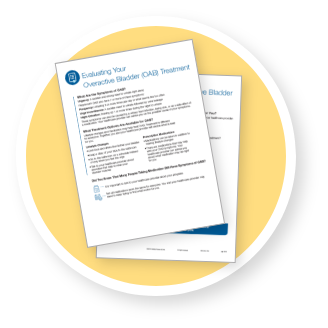
Treatment Follow-Up Patient Handout
Patient-friendly handout that helps patients evaluate their current OAB
treatment to determine, along with your guidance, if it’s still the most
appropriate option for them.
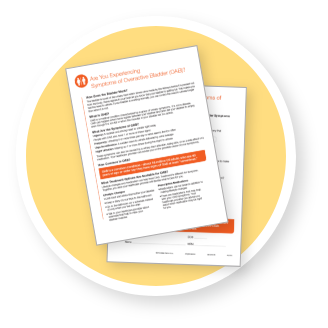
Treatment-Naïve Patient Handout
Patient-friendly handout that provides patients with an overview of OAB
and asks them questions about their bathroom behaviors to help assess
if they are experiencing symptoms.
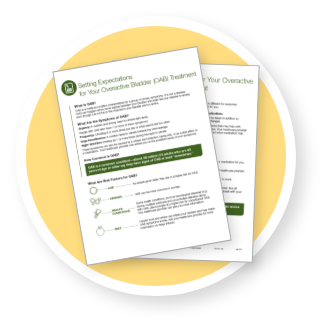
Treatment-Initiated Patient Handout
Patient-friendly handout that highlights the prevalence of and risk
factors for OAB, and then provides patients with guidance on setting
expectations for OAB treatment.

OAB Treatment Guidelines
A simple, step-wise algorithm for treating OAB
patients in accordance with AUA/SUFU
Guideline. This algorithm has been
updated to include combination treatment as an
option for appropriate OAB patients.

Office Staff Flashcard
Handout that defines the difference between
medical insurance and pharmacy benefits, and
emphasizes the importance of collecting patient
prescription benefit information.

Treatment Follow-Up Patient Handout
Patient-friendly handout that helps patients
evaluate their current OAB treatment to
determine, along with your guidance, if it’s still
the most appropriate option for them.

Treatment-Naïve Patient Handout
Patient-friendly handout that provides patients
with an overview of OAB and asks them
questions about their bathroom behaviors to
help assess if they are experiencing symptoms.

Treatment-Initiated Patient Handout
Patient-friendly handout that highlights the
prevalence of and risk factors for OAB, and then
provides patients with guidance on setting
expectations for OAB treatment.
